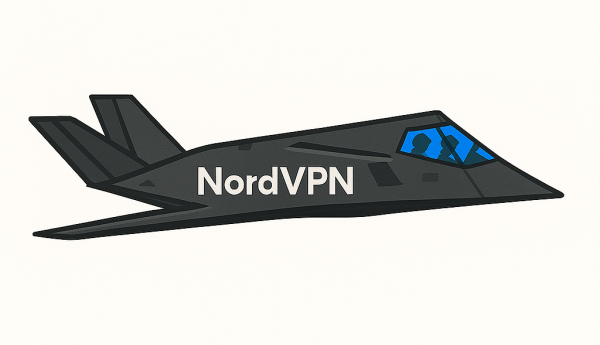
VPN Terminology
| Term | Description | Providers |
|---|---|---|
| Certificate Pinning | Prevents man-in-the-middle attacks—Barny checks the perch’s seal before landing. | NordVPN, ExpressVPN |
| Custom DNS with No Logs | Prevents Domain Name System leaks—Barny reads scrolls without alerting the castle librarian. | NordVPN, PIA, Surfshark |
| Encryption Overhead | The performance cost of encrypting and decrypting data during VPN use. Lightweight protocols like WireGuard reduce this overhead, improving speed and responsiveness. | All listed providers (varies by protocol and server setup) |
| Firewall Integration | Blocks non-VPN traffic—Barny only flies through approved skies. | PIA, NordVPN |
| Geo-Specific DNS | Faster content unlocks via local DNS scrolls. | Surfshark, CyberGhost |
| Higher-Level Encryption | AES-256 is standard, but some VPNs offer multi-layer or quantum-resistant options. | NordVPN, ExpressVPN, Surfshark, PIA |
| Kill Switch | Cuts internet if VPN drops—Barny never lets a scroll fall unshielded. | All listed providers |
| Latency | The delay between sending a request and receiving a response—measured in milliseconds. Lower latency means faster scrolls, smoother streaming, and quicker page loads. | All listed providers (varies by server distance and congestion) |
| Multi-Hop Routing | Scrolls pass through multiple encrypted perches—like Barny flying relay-style. | NordVPN, Surfshark |
| Obfuscation (Enfuscation) | Disguises VPN traffic to look like regular HTTPS—Barny cloaks his flight path. | NordVPN, ExpressVPN, Surfshark |
| Optimized Streaming Servers | Dedicated routes for Netflix, BBC iPlayer, etc.—pre-tested for smooth binge flights. | NordVPN, ExpressVPN, Surfshark, CyberGhost |
| Protocol | The encryption and tunneling method your VPN uses to secure data—e.g., WireGuard, OpenVPN, Lightway, NordLynx. | All listed providers |
| Post-Quantum Readiness | Future-proof encryption—Barny’s scrolls resist even tomorrow’s decoding spells. | NordVPN, ExpressVPN, Surfshark, PIA |
| RAM-Only Equipment | Servers forget everything on reboot—no scroll trails, no residual ink. | NordVPN, ExpressVPN, Surfshark, CyberGhost, PIA |
| Server Load Balancing | Auto-switches to less crowded perches—improves speed during peak hours. | NordVPN, ExpressVPN |
| Smart Routing | Selecting the best server and route based on dynamic factors to enhance media and streaming access and playback quality. | ExpressVPN, NordVPN, Surfshark, PIA |
| Speed | See below | |
| Split Tunneling | A user-friendly switchover mechanism so users can more easily route some traffic outside the VPN to avoid the slowing effect VPNs have. | ExpressVPN, NordVPN, Surfshark, PIA |
| Streaming App Integration | Direct perch access from streaming devices—seamless scroll from remote to screen. | ExpressVPN (Fire TV), Surfshark (Android TV) |
| Territory Beyond the Eyes | Jurisdictions outside 5/9/14 Eyes alliances—Barny flies beyond the watcher towers. | NordVPN (Panama), ExpressVPN (BVI), Surfshark (Netherlands) |
| Torrenting | Peer-to-peer file sharing—Barny gathers scroll fragments from many perches to complete the flight. | PIA (Private Internet Access), NordVPN, ExpressVPN, CyberGhost |
| Unblock | See below | |
| WireGuard Protocol | Lightweight encryption for faster scrolls—ideal for mobile and low-latency streaming. | NordVPN, Surfshark, CyberGhost, PIA |
Speed
| Term | Description |
|---|---|
| Speed |
Speed has two dimensions: Download (e.g. watching Netflix) and Upload (e.g. sending emails). VPNs encrypt and decrypt traffic, which adds a slowing effect. Speed also depends on: • Server distance — the farther away, the slower the connection. • Tunnel width and traffic volume — especially with free VPNs, which may suffer from cloginess. • Real-world feedback — only feedback of customer experience reveals how VPNs perform under pressure. Slowness can affect video quality and even prevent timely login to banking services. Speed matters when trust and responsiveness are key. |
Torrenting
| Term | Description |
|---|---|
| Torrenting |
Torrenting is a method of downloading and sharing files using a decentralized, peer-to-peer (P2P) network. Instead of retrieving a file from a single server, torrenting allows users to download small pieces of the file from multiple users (called “peers”) who already have it. 🧠 Why it matters: • It’s efficient for large files like videos, software, or datasets • It can be used legally (e.g., open-source software), but is also associated with copyright risks • VPNs help protect your identity and prevent ISP throttling or surveillance during torrenting 🦉 Barny’s Caption: “Scroll shared in fragments—Barny masks the perch while the pieces fly in.” |
Unblocking & Unblock Limited
| Term | Description |
|---|---|
| Unblocking |
Unblocking refers to a VPN’s ability to bypass digital barriers that restrict access to content. These barriers fall into two main categories: 1. Platform-Level Blocks (Streaming & Services) These are restrictions imposed by websites and platforms—especially streaming services—that actively block known VPN IP addresses. Type A: Standard geo-restrictions. The platform blocks access based on your location. A VPN with rotating IPs or stealth servers can bypass this. Type B: Same as Type A, but access requires satisfying additional conditions—such as ID verification or age checks. In the UK, some sites are mandated to require ID in an unreasonable manner. This restriction can often be avoided using a VPN. Check the chart on the VPN provider’s homepage for the current list of advertised unblocked sites. 2. Government-Level Blocks (Censorship & Firewalls) These are broader restrictions imposed by governments—either at the server level (blocking VPN traffic) or website level (blocking content). VPNs that succeed here use obfuscated servers, multi-hop routing, or domain fronting to bypass censorship. This is about freedom of access, not just entertainment. |
| Unblock Limited | This term means that access to streaming platforms may fail on occasion—especially with services like Netflix that actively block VPNs. |

Social Media
Copyright © 2025. R V Gamson